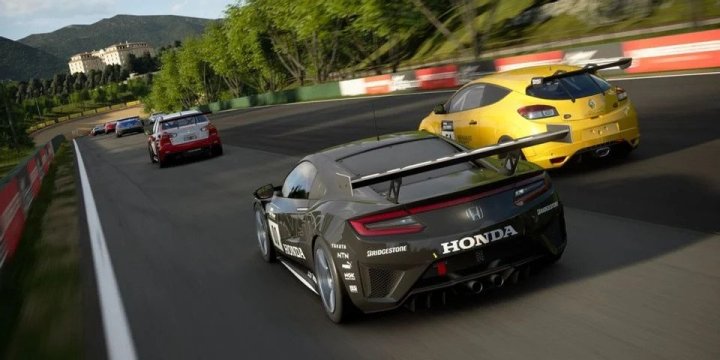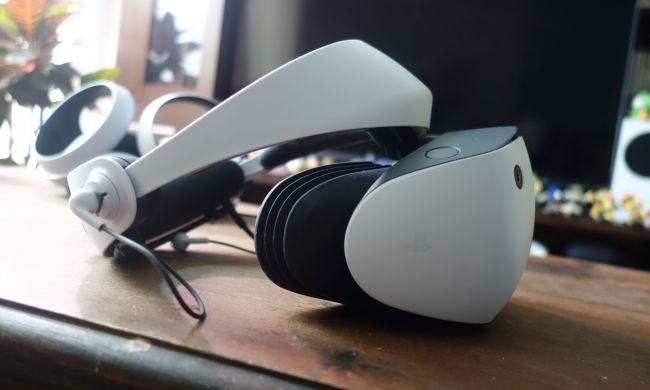My friends and I have a running joke that revolves around a specific brand of car: Honda. Don’t ask me why, but it’s an elaborate gag that’s been happening for years. So when I bought Gran Turismo 7, the ultimate driving simulator, I decided that I was going to take that bit to the next level by buying every single Honda model in the game. I refused to spend my credits on anything but Hondas.
Gran Turismo 7 had other plans, though. While there’s nothing actively stopping me from buying any car I want, it’s clear that the game does not want me to spend my entire budget on Hondas. Frankly, that’s responsible, but it wasn’t going to stop me from trying anyway.
By creating a bizarre metagame for myself within Gran Turismo 7, though, I began to realize just how frustrating the game’s reliance on microtransactions can be. As I tried to carefully budget my credits, I became hyper-aware of how much the game wanted me to spend them — and how tempting it becomes to buy them with real money.
The Honda economy
My mission to buy every Honda in Gran Turismo 7 seemed simple at first glance. While it’s one of the more heavily featured brands in the game, there are only 22 Hondas in total. The prices on them vary. When I head into brand central, the cars start at a five-figure price but the highest-end ones can cost up to a million credits. Fortunately, the game’s developers gave all players a million credits for free due to criticism over the game’s microtransactions at launch. I began loading up my garage with Hondas in quick succession, buying the cheapest ones in batches.

At this point, it probably sounds like I was playing the game out of pure irony, but that wasn’t the case. While I was having a bit of fun with my car collection, I was sincerely enjoying the experience and playing through its content normally. It’s a finely-tuned driving simulator that looks and sounds incredible. I was playing through its Menus, which is the game’s pseudo-campaign, and spending hours at a time doing so.
The more I wanted to progress, however, the harder my Honda goal became. In Gran Turismo 7, credits can be spent on cars, tuning parts, and maintenance. If you want to complete the game’s set of Menus, those aren’t optional purchases. There are certain expenditures players need to make to complete parts of the game and they can stack up quickly.
By the time I got around 15 missions deep, I hit a roadblock. No matter how well I raced in certain circuits, I just couldn’t win. Each car has a number rating (PP), which determines how powerful it is. Since races are set up like a chase where players have to catch up to computer drivers, that number matters. If I was using a car that was 100 PP behind the recommended level, there was virtually no chance to win. Alternately, some races have a PP limit, meaning players have to tune their cars back down to compete. My option was to either buy a new car or spend credits to tune the ones I had.

On top of that, many races have specific requirements when it comes to what I can drive. I’d have to use a specific class of vehicle to complete objectives or sometimes even a specific non-Honda brand. In one Menu, I had to complete a series of races only using a Camaro. I had one in my garage, but it simply wasn’t powerful enough to compete, so I had to pony up.
U-turn
With each new mission, I found myself back in Brand Central purchasing another race-legal car. My stash of credits began to drain, meaning I’d need to grind out races to obtain more.
That’s when the dreaded itch hit. As I hovered over a car I couldn’t afford, I caught a bit of text directing me to spend real money to replenish my virtual wallet. I considered it for a brief moment, thinking how convenient it would be to plop down some money for a stack of credits so I could buy the cars I wanted and still engage with the game as intended. After all, is $10 really that much money?
Then I remembered that I’d already spent $70 to buy the game. Hours into my experience, why was I already compelled to spend more?
Gran Turismo 7’s economy has been a point of controversy since the game launched. After releasing to glowing reviews, updates began shifting credit payouts, making it slower to obtain currency through races. That turned the game into a grind that felt like it was nudging players into spending more to avoid tedious races. Some felt developer Polyphony Digital had pulled a bait-and-switch on players, leading them to review bomb the game in protest.
Gran Turismo 7 Update 1.11 has arrived with increased rewards, new race events, and other bug fixes.
Full Details: https://t.co/RzRbGow1sQ
— Gran Turismo (@thegranturismo) April 7, 2022
Thankfully, that feedback didn’t fall on deaf ears. Polyphony Digital began rolling out updates to the game in April, which increased payouts across the board. As of April 7, players now get more credits from world circuits, custom races, and arcade mode. It’s a promising start to the game’s U-turn, though I can’t help but feel a little critical about the core experience that got the developer into the mess in the first place. Skill only gets drivers so far in races, creating an overreliance on purchases that bleeds into both solo and online play. It’s nothing new for video game economies, but Gran Turismo 7 is a full-price game that swerves uncomfortably close to the pay-to-win lane.
I recognize that my joke way of playing Gran Turismo 7 wasn’t the intended experience, so I don’t personally feel slighted. But placing a strict budget on myself in-game, just as I might in real life, highlighted just how many credits I was forced to spend if I just wanted to progress or stay competitive. Imagine if Halo Infinite asked players to save up credits in order to buy the rocket launcher for multiplayer use. Even with adjustments, the system Polyphony Digital has created here feels like the wrong fit for a $70 game where skill alone can only take players so far.
I just hope that the studio finishes tinkering with its economy in time for the Honda Days.



